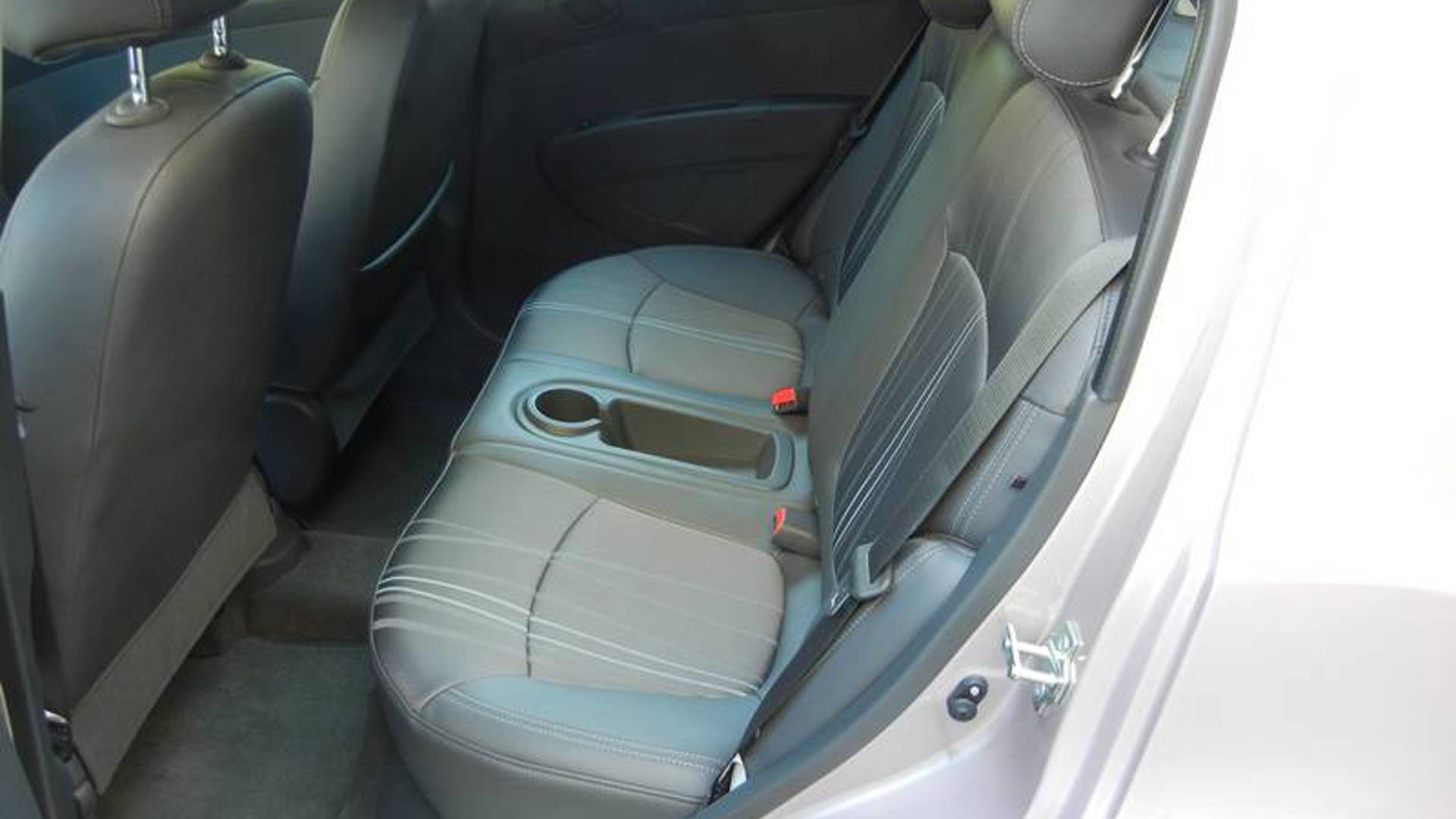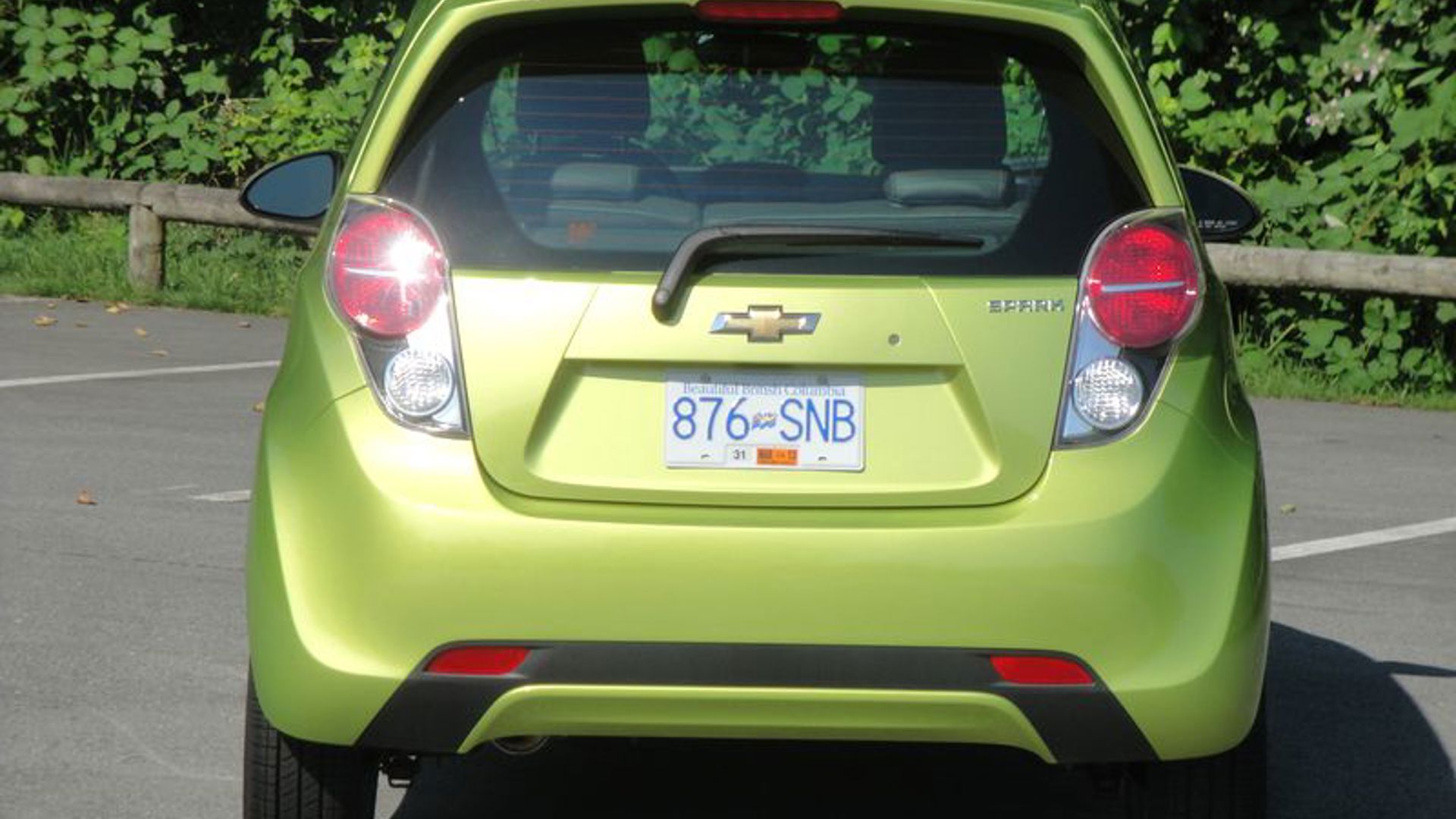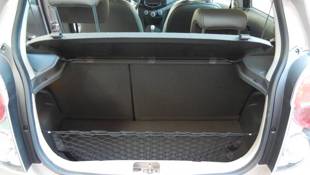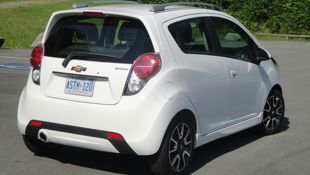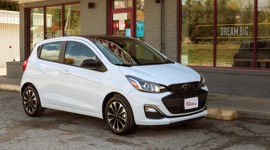Vehicle Type
Mini-car
History/Description
Though small and thrifty, the Chevrolet Spark packed more passenger and cargo room than competitors like the Smart Fortwo, Scion iQ and Fiat 500. In fact, with its little rear seats folded down, Chevrolet’s first mini-car for the U.S. and Canada provided owners 884L of space – which is enough to hold a Samsonite laptop backpack, a rolling luggage bag, an upright suitcase and a golf-bag. So, small as it is, Spark was big on being larger than it looked, and to many will prove a more functional alternative to some competitors.
Small as it is, Spark was big on being larger than it looked, and to many will prove a more functional alternative to some competitors.
There’s an all-new Spark coming for model-year 2016, which puts the original-generation model, which launched here in 2013, squarely into used car territory. With only a few years of data available, it’s too soon to tell how reliable Spark looks as a used-car bet with absolute certainty – though shoppers looking to save some small-car dollars through clear-out dealer incentives, or purchase of a slightly used model with plenty of remaining warranty may wish to consult the following information and tips ahead of their shopping process.
Infotainment buffs will appreciate the available MyLink infotainment system, which includes a 7.0-inch touchscreen and advanced Smartphone connectivity enabling remote start, GPS trackdown of your Spark in a crowded parking lot, the ability to check fuel range remotely, and plenty more.
Power windows were standard fare on all models, keyless remote was available, and satellite radio could be specified.
Spark offered up 10 standard air bags, including dual-stage frontal air bags, seat-mounted side air bags and side curtain air bags that extend over the front and rear seats. That’s a lot of airbags, and as a global car, several were added for use in North America to meet our safety regulations. Spark features a structure which includes high-strength steel, and safety features including stability control and the OnStar safety and communications system.
Engines/Trim
Under the hood, all Spark models get a 1.2L four-cylinder engine from Chevrolet’s award-winning ECOTEC powerplant range, making 84 hp in this application. Shoppers can select a slick-shifting five-speed manual transmission, or a four-speed automatic, later models got a CVT. Drivers can expect combined fuel consumption around 6 L/100 km of regular-grade fuel – not the pricey premium gas required by the Fiat 500 and Smart Fortwo. Various maintenance-reducing measures, including a maintenance-free timing chain and filled-for-life transmission, are applied throughout the Spark’s powertrain, helping save money, too.
Note that the Spark LS opened the model range, with 1LT and 2LT models comprising mid-range and full-jam where feature content is concerned.
What Owners Like
No surprises with owner-stated positives here. Most say the Spark is a well-rounded car that’s easy to park, easy on fuel, fun to drive, and ready for even long-distance driving where required. Headroom and legroom are reported to be relatively abundant, several owners comment on a powerful air conditioner system, and unique and stand-out styling, as well as plenty of technology, helped round out the package.
What Owners Dislike
Limited rear-seat and cargo space for larger items, generous levels of road noise, and a rubbery feel to the Spark’s suspension are among the most commonly-reported gripes.
Here’s a look some owner reviews.
The Test Drive
If you’re shopping out a used Spark, you’ll have little issue finding one with plenty of remaining warranty – given its positioning as a lower-mileage city vehicle, and the fact that the first copies went on sale just three years ago.
Still, a few notes and tips apply.
First, be on the lookout for Check Engine lights. Apparently, Spark is a little fussy about the pressure in its fuel tank, so an improperly-tightened fuel cap, or a condition caused by filling the gas tank with the engine running can cause the light to illuminate. If you see a Check Engine light, be sure to have the Spark’s ECU scanned to determine why it’s illuminated. A bad sensor somewhere within the engine or emissions system could also be to blame.
Some owners have reported issues, potentially relating to a coolant leak from the overflow tank, or an engine that’s losing coolant. A burnt, sugary smell can often accompany coolant that’s burning, and has been noted by some owners. Though this issue seems rare, a loss of engine coolant can indicate anything from a leaky hose to an imminent head-gasket failure, so be sure to be on the lookout for cooling system trouble signs on a test-drive. If in doubt, ask a mechanic for his advice.
Drive your potential used Spark candidate up to highway cruising speeds and ensure that it has no trouble maintaining a speed of 100 km/h or more. Owners say the Spark has no issue maintaining speeds despite its 84 hp engine, though some have reported hesitation, high highway revs, and difficulty in climbing hills or keeping to a single speed. Though this problem is somewhat rare, it’s typically remedied with reprogramming of the transmission computer, or a revised PCV valve, which was covered by a Technical Service Bulletin (TSB).
Another TSB was issued to address issues around inconsistent air conditioner performance. Run the AC on the Spark you’re test-driving, confirming that it blows cold air, quickly, and continues to do so for the duration of your test-drive, under all conditions. Inconsistent performance is likely the result of a bad expansion valve, which may be covered under warranty. Some dealers have told customers that their AC is working fine despite complaints, while others have replaced the valve, typically solving the issue. TSB’s aside, with the Spark’s VIN number, your local Chevrolet service manager can determine if any recall work may be outstanding on the model you’re considering, too.
Shoppers are also advised to feel the Spark’s steering for signs of poor alignment, which will present itself as a tug or pull in the wheel while driving down a straight, flat road. If either sensation is noted, check the tires for uneven wear, and ask a mechanic to check the car’s alignment, fixing it if necessary. An out-of-whack alignment can waste fuel, negatively affect handling, and cause premature tire wear.
Otherwise, it’s all about standard used car checks. Confirm that the seller of the used Spark you’re considering isn’t trying to pass off a worn set of tires and brakes, inspecting all components for signs of wear, measuring tire tread depth and looking for signs of uneven tire wear, asking a mechanic for help if you’re unsure how.
Be sure the seller was fond of sticking to the Spark’s maintenance schedule, and budget for a full tune-up and fluid change if the model you’re considering doesn’t’ have full service records available. Doing so will provide extra
peace of mind and may boost fuel efficiency, too. Finally, a quick going over of the used Spark’s suspension system components by a mechanic can reveal any parts, including ball-joints and bushings, that may require replacing to maintain comfort and handling characteristics.
A final note: if the Spark you’re considering is nearing the end of its warranty period, be sure to have a service manager at a GM dealer document any issues you note, whether or not they’re serious, and whether or not they require immediate attention. With issues documented, warranty related repairs may be easier to have repaired, even if they worsen or resurface after the warranty expires.
The Verdict
A healthy used Spark with a mechanical thumbs up, or a good deal on a year-old demo model with lots of remaining warranty, should provide shoppers with access to a cheap-to-run and affordable car that’s big on connectivity, space and stand-out styling.
A few recalls.
Crash Test Ratings
NHTSA: 4/5 Stars (2014)
IIHS: Top Safety Pick (2015)




